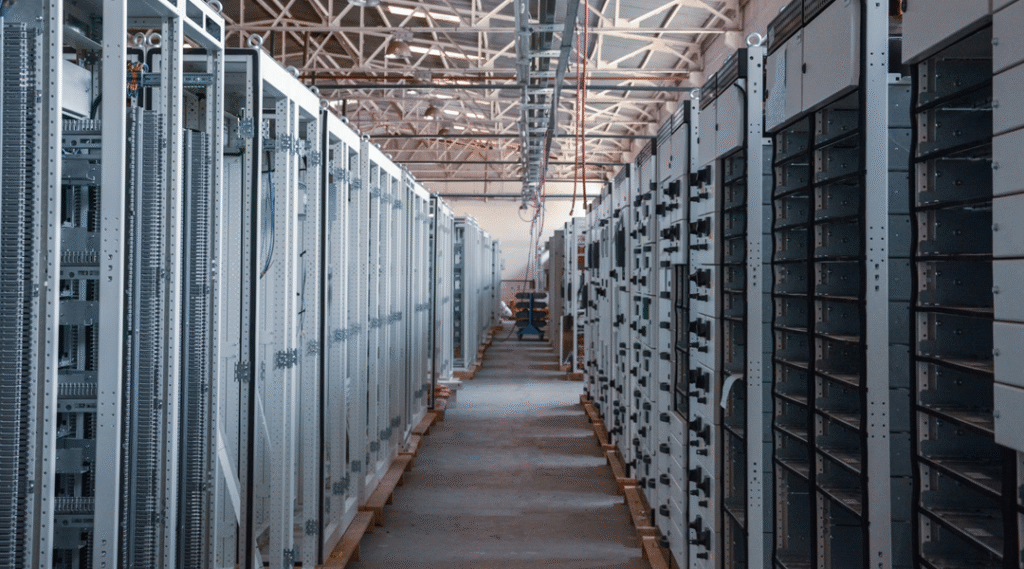Data centers form the backbone of our modern digital world, housing the critical infrastructure that keeps applications running, data flowing, and businesses operating smoothly. At their heart lies a carefully orchestrated ensemble of hardware, software, and systems engineered to deliver performance, reliability, and scalability. In this article, we explore the five core components of a data center—servers, storage, networking, power systems, and cooling infrastructure—examining how each contributes to the facility’s overall functionality and what trends are shaping their evolution.
1. Servers: The Computational Workhorses
Servers are the primary engines of data-center operations, performing compute tasks that range from simple web serving to complex AI inference. Modern data-center servers typically adopt a rack-mounted form factor, each unit housing multiple CPUs (central processing units), memory modules, and high-speed interconnects.
- CPU and Accelerator Technologies: Traditional x86 architectures remain dominant, but the rise of GPU and FPGA accelerators is driving a shift toward heterogeneous computing. AI workloads, for instance, often run more efficiently on GPUs or specialized ASICs (e.g., TPUs), prompting many operators to design GPU‑optimized server clusters.
- Modular and Blade Servers: To maximize density and simplify maintenance, blade or modular servers share common power and cooling resources within a chassis. This design reduces cabling complexity and enables hot-swappable components, boosting uptime.
By selecting the right server architectures and optimizing for workload characteristics, data centers can improve performance-per-watt and reduce total cost of ownership.
2. Storage: Managing Vast Quantities of Data
Storage systems underpin every data-center service, from transactional databases to long‑term archival. The storage landscape can be broadly divided into three tiers:
- Tier‑1 (Primary Storage): Often based on all‑flash arrays, this tier delivers the highest IOPS (input/output operations per second) and lowest latency, making it ideal for mission‑critical databases and real‑time analytics.
- Tier‑2 (Secondary Storage): Hybrid arrays that combine SSDs with HDDs strike a balance between performance and capacity, serving file shares and application hosting.
- Tier‑3 (Archival Storage): Tape libraries or cold-object stores in the cloud offer the most cost‑effective solution for backup and compliance, where retrieval times can be measured in minutes or hours.
Emerging storage trends include NVMe-over-Fabrics (NVMe-oF) for ultra‑low latency and software‑defined storage (SDS) platforms that abstract hardware across multiple vendors, simplifying data management and scaling.
3. Networking: The Data Highway
A data center’s networking fabric stitches together compute and storage nodes, enabling rapid data exchange at scale. Core networking components include:
- Top-of-Rack (ToR) Switches: Installed at the top of each server rack, ToR switches reduce cabling complexity by aggregating server ports into a single switch.
- Spine-Leaf Architecture: By deploying leaf switches connected to a spine layer, operators achieve predictable latency and high bandwidth between any two endpoints, eliminating single points of congestion.
- High‑Speed Interconnects: Adoption of 25/40/100/400 Gbps Ethernet and, increasingly, InfiniBand for HPC clusters, supports ever-growing data-transfer demands.
Software‑defined networking (SDN) and network function virtualization (NFV) frameworks are also gaining traction, allowing administrators to programmatically manage traffic flows, enforce security policies, and rapidly provision new services.
4. Power Systems: Ensuring Uninterrupted Operation
Power availability and quality are critical: an outage can halt business operations, result in data loss, and damage equipment. A robust power infrastructure consists of:
- Utility Feed and Transformer: The primary feed from the grid steps down voltage to the facility’s requirements, often backed by dual, diverse feeds to mitigate regional failures.
- Uninterruptible Power Supplies (UPS): Battery‑based or flywheel UPS units bridge the gap between power loss and generator startup, ensuring continuous operation.
- Backup Generators: Diesel or natural gas generators can run for days, providing long‑term resilience against grid failures.
- Power Distribution Units (PDUs): Intelligent PDUs within cabinets monitor and report power usage at the rack or outlet level, enabling granular capacity planning and fault detection.
Energy-efficiency metrics, such as Power Usage Effectiveness (PUE), drive continual optimization of power delivery and consumption.
5. Cooling Infrastructure: Thermal Management at Scale
Effective cooling preserves equipment reliability and efficiency. Data centers employ multiple cooling strategies:
- Air Cooling: Traditional CRAC (computer room air conditioning) units circulate chilled air through cold aisles and return warm exhaust to the cooling systems.
- Liquid Cooling: Direct-to-chip liquid cooling and rear-door heat exchangers extract heat more efficiently than air, enabling higher rack densities.
- Immersion Cooling: Servers submerged in dielectric fluids can operate at extreme densities, though this approach requires specialized hardware and maintenance protocols.
Advanced monitoring—using thermal sensors and AI‑driven analytics—enables dynamic adjustment of cooling parameters, minimizing energy waste and maintaining optimal temperatures.
Final Thoughts
Servers, storage, networking, power, and cooling systems form an interdependent ecosystem that determines a data center’s performance, reliability, and cost-efficiency. As demand for compute and storage continues to accelerate—fueled by AI, IoT, and cloud services—data-center operators are embracing heterogeneous architectures, software-defined infrastructures, and advanced cooling techniques to stay ahead. Understanding these core components is essential for architects, operators, and decision‑makers seeking to design or optimize the next generation of digital infrastructure.
All articles on this special edition-DATA CENTER:
(#1) Inside the Digital Backbone: Understanding Modern Data Centers
(#2) From Vacuum Tubes to Cloud Campuses: The Evolution of Data Center Architecture
(#3) From Servers to Coolant: A Deep Dive into Data Center Core Components
(#4) Harnessing Efficiency: Overcoming Energy and Sustainability Hurdles in Data Centers
(#5) Cooling Innovations Powering the Next Generation of Data Centers
(#6) Safeguarding the Core—Data Center Security in the Physical and Cyber Domains
(#7) Decentralizing the Cloud: The Rise of Edge Computing and Micro Data Centers
(#8) Data Center: Cloud, On-Premises, and Hybrid Infrastructure
(#9) Intelligent Data Center Management and Automation
(#10) Market Landscape and Key Players in the Data Center Industry
(#11) Navigating Regulatory, Compliance, and Data Sovereignty in Modern Data Centers
As for in-depth insight articles about AI tech, please visit our AI Tech Category here.
As for in-depth insight articles about Auto Tech, please visit our Auto Tech Category here.
As for in-depth insight articles about Smart IoT, please visit our Smart IoT Category here.
As for in-depth insight articles about Energy, please visit our Energy Category here.
If you want to save time for high-quality reading, please visit our Editors’ Pick here.



